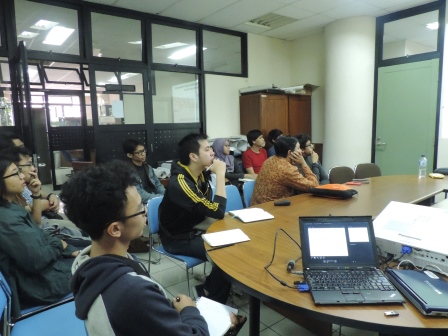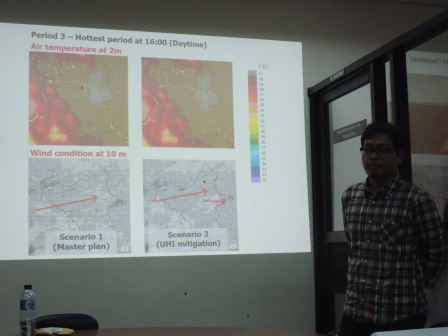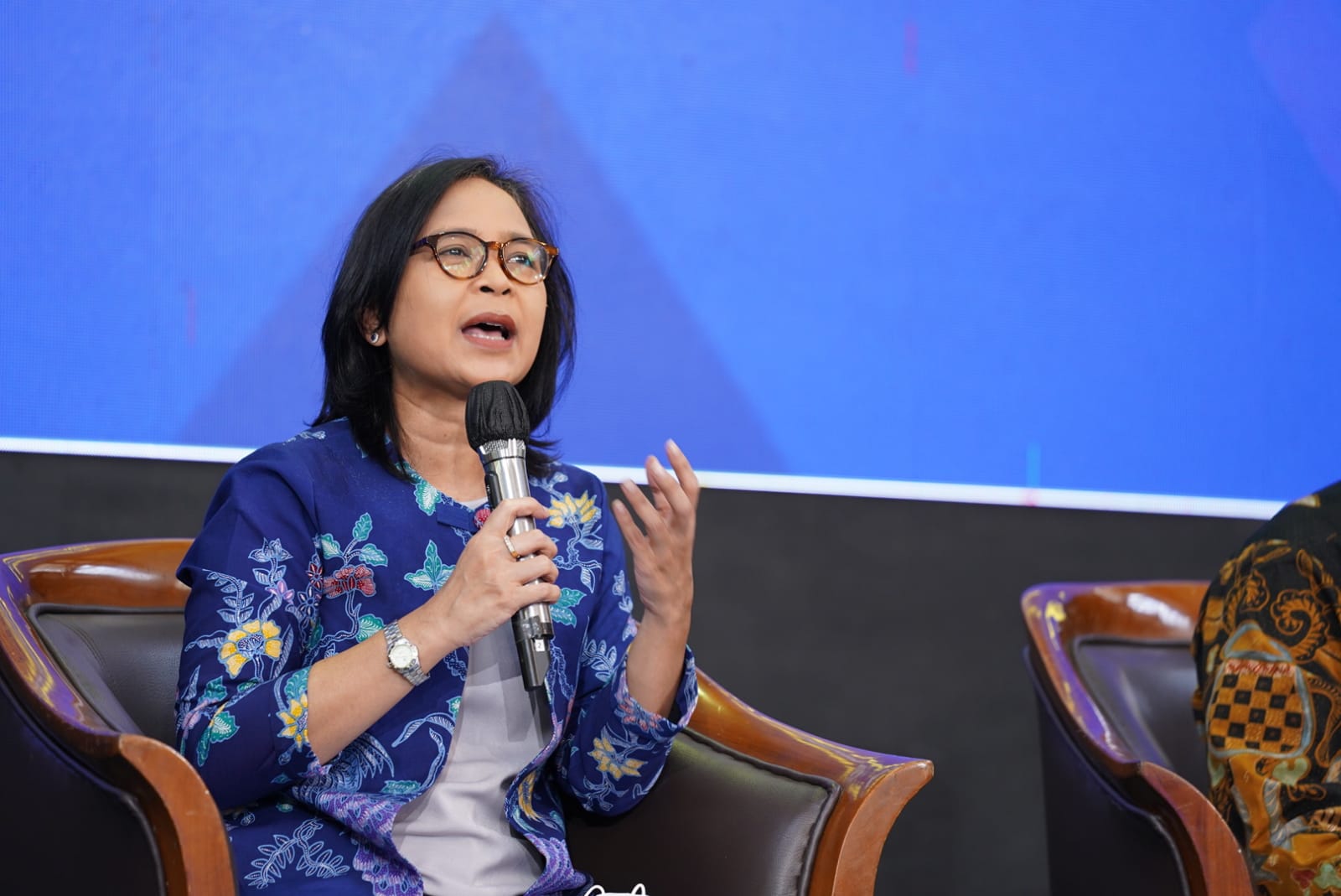ITB Architecture Graduate program held A Guest Lecture to Discuss Urban Heat Island
By Hafshah Najma Ashrawi
Editor Hafshah Najma Ashrawi

 BANDUNG, itb.ac.id - On Friday (27/03/15), taking place in Architectural Engineering Laboratory Building ITB, ITB Architecture Graduate program held a lecture titled "Urban Climate Simulation for Assessing Urban Heat Island in the Growing Asian Cities". Similar guest lecture is routinely conducted by ITB Architecture graduate program, this time a guest lecture on the topic of the urban heat island invited the alumni, Andhang Rakhmat Trihamdani (Architectural Engineering 2006) which is currently completing his doctorate degree at Hiroshima University. Andhang actively involved in the Building and Urban Environmental Science in Asia (Buesa) Research Group.
BANDUNG, itb.ac.id - On Friday (27/03/15), taking place in Architectural Engineering Laboratory Building ITB, ITB Architecture Graduate program held a lecture titled "Urban Climate Simulation for Assessing Urban Heat Island in the Growing Asian Cities". Similar guest lecture is routinely conducted by ITB Architecture graduate program, this time a guest lecture on the topic of the urban heat island invited the alumni, Andhang Rakhmat Trihamdani (Architectural Engineering 2006) which is currently completing his doctorate degree at Hiroshima University. Andhang actively involved in the Building and Urban Environmental Science in Asia (Buesa) Research Group.
 Compared with America, Asia can be said to have more megacities (cities with a population of more than ten million people-Red), while smaller cities are also growing rapidly. This also predicted that there will be more people living in urban areas. On the other hand, it will contribute to a phenomenon known as the 'urban heat island'. Urban heat island is a phenomenon of the warming air temperatures in urban areas resulting in a significant temperature difference between urban area and rural area.
Compared with America, Asia can be said to have more megacities (cities with a population of more than ten million people-Red), while smaller cities are also growing rapidly. This also predicted that there will be more people living in urban areas. On the other hand, it will contribute to a phenomenon known as the 'urban heat island'. Urban heat island is a phenomenon of the warming air temperatures in urban areas resulting in a significant temperature difference between urban area and rural area.
The causes of the urban heat island are city complex geometrical structure, high thermal capacity of the building material, the greenhouse effect, reduced wind speeds in urban areas, and reduced urban green open spaces. There are enough researches concerning urban heat island, unfortunately most of the source came and took a case study in European countries. "It can be said only a few studies that discuss the urban heat island in Asian countries although countries with a tropical climate will be more vulnerable to urban heat island effect," Adhang said.
Using Weather Research and Forecasting for Analyzing Urban Heat Island Mitigation Scenarios
 Andhang mention that of the three commonly used methods, he uses numerical simulation technique. Compared with the other two methods, namely satellite imagery and ground base measurement, numerical simulation technique allowed us to do more comprehensive analyze. Andhang used the Weather Research and Forecasting program (WRF) and took two case studies, in Johor Bahru, Malaysia and Hanoi, Vietnam. Andhang compared the current land cover with land cover plan as stated in the masterplan of the each cases, then analyzing its effect on the urban heat island.
Andhang mention that of the three commonly used methods, he uses numerical simulation technique. Compared with the other two methods, namely satellite imagery and ground base measurement, numerical simulation technique allowed us to do more comprehensive analyze. Andhang used the Weather Research and Forecasting program (WRF) and took two case studies, in Johor Bahru, Malaysia and Hanoi, Vietnam. Andhang compared the current land cover with land cover plan as stated in the masterplan of the each cases, then analyzing its effect on the urban heat island.
 In his lecture, Andhang pointed out the importance of urban designers to pay attention to environmental issues before planning, this will greatly affect the comfort of the population. Development of green open spaces also need to be considered because there are some criteria that can improve efficiency in reducing the impact of urban heat island. In the example case study in Hanoi, Andhang mention that the land cover plan as stated in the master plan will lead to an increasing of urban air temperatures and resulting in reduced thermal comfort for building occupants.
In his lecture, Andhang pointed out the importance of urban designers to pay attention to environmental issues before planning, this will greatly affect the comfort of the population. Development of green open spaces also need to be considered because there are some criteria that can improve efficiency in reducing the impact of urban heat island. In the example case study in Hanoi, Andhang mention that the land cover plan as stated in the master plan will lead to an increasing of urban air temperatures and resulting in reduced thermal comfort for building occupants.
Before it closed, question and answer session was held which shows the enthusiasm of the participants. Various questions were asked related to the topic of building and architecture. When asked about his expectations related to the development of environmental research in Indonesia, Andhang replied that the data availability and management in Indonesia needed to be fixed. "Especially the data needed for scenario research estimating the urban heat island and other environmental studies, the data are relatively more difficult to obtain compared with other countries," Andhang said.

.jpg)
.jpg)
.png)
.jpg)
.jpg)

